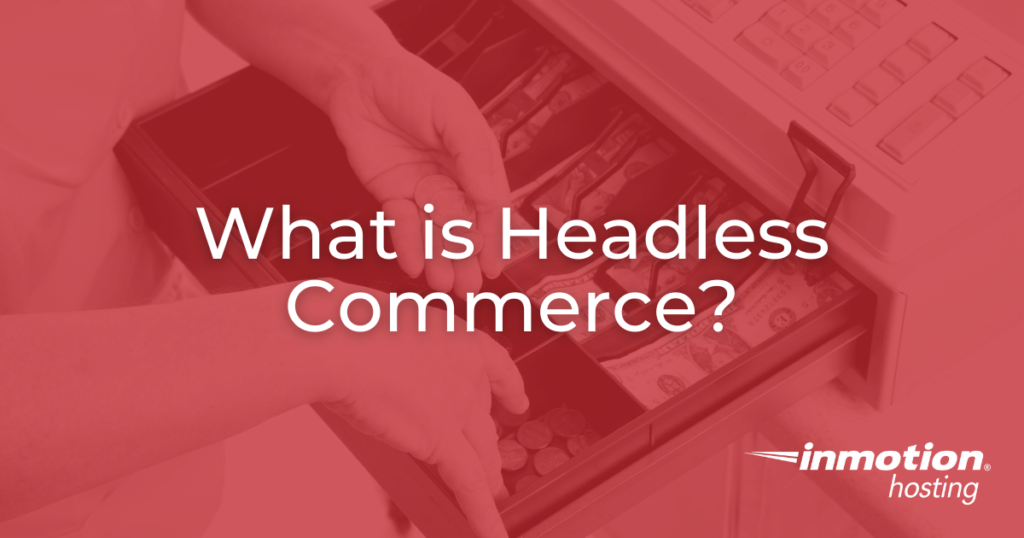
Headless commerce is the practice of separating the back-end and front-end aspects of an eCommerce website for the purposes of branding, ease of use, and customizability. In this article we will discuss the difference between front-end and back-end web development and describe how these concepts are used in the context of headless commerce.
Topics Include
- What is Headless Commerce?
- Benefits of Headless Commerce Solutions
- Benefits of Headless Commerce on Dedicated Servers
What is Headless Commerce?
As mentioned above, headless commerce is an eCommerce architecture that involves separating the back-end and front-end (head) aspects of eCommerce solutions. By configuring a website this way, the back-end of the site can be changed without adversely impacting or changing the front-end in any way. Two popular providers of headless commerce are Shopify and Magento.
Maximize your eCommerce business with Magento Hosting. Create a robust online shop with options for customization, flexibility, and scalability.
Back-End Web Development
In the context of web design and development, the back-end refers to the system administration tasks that allow a web server and the websites it houses to continue to function. Generally speaking, back-end resources consist of a server, a database, and an application. Tasks such as maintaining database engines, managing system resources, and enacting security measures are all tasks that are considered part of back-end web development. In addition, the underlying code that websites use to function is part of the purview of back-end web development. The exception to this is HTML and CSS, which are primarily used to develop graphical user interfaces for the front-end of websites.
Front-End Web Development
In the context of web development, the front-end refers to the user-facing aspects of a website or web application. This usually consists of the graphical user interface of a website such as menus, interactive images, and methods of navigating the various pages of the site. This largely involves the use of HTML and CSS to create formatted text, images, and page elements. Modern web design platforms such as WordPress perform much of this for the user, providing premade page elements, fonts, and image formats. Through the use of simple drag-and-drop interfaces, users can quickly build a front-end for their web presence without needing to learn the HTML and CSS programming languages.
Benefits of Headless Commerce
Branding
Through the use of headless commerce, custom layouts and other front-end designs can be utilized without interfering with the operations of the back-end services. This allows for a greater degree of personalization and organization-specific branding than other eCommerce architectures.
Flexibility
Headless commerce also allows for greater flexibility in terms of workflow. Front-end and back-end web developers can work independently on new features and user experiences without fear of service disruption. This is advantageous for any organization looking to develop both front-end and back-end eCommerce assets simultaneously.
Speed
By decoupling the front-end of an eCommerce website from the back-end resources, changes can be made to the front-end much more quickly without impacting the back-end. This means you can perform the required updates without needing to consult a different development team first, saving everyone time.
Consistency
Since you have total control over the front-end with headless commerce, you can create a consistent user experience across the board. This makes it easier for users to navigate your eCommerce site and purchase the items they want.
Benefits of Headless Commerce on Dedicated Servers
If you have the benefit of being able to host using a dedicated server, then you will see other benefits of using headless commerce, especially in the area of customization, performance, and flexibility.
Customization Options
With a dedicated server, you have total control over the software you choose to install. This means you can install the exact software you need to set up your preferred eCommerce solution, both in terms of back-end resources and front-end assets. Need a certain version of MySQL for your website’s database? No problem!
Flexibility
Since you own the entire server, you can make changes whenever you need to. This means you can make quick modifications to your server in response to changing operational demands without worrying about restrictive server limits or performance degradation. Need to upgrade your PHP version to use a new sales plugin? That can be done easily on a dedicated server.
Reliability
Sometimes it’s just easier to do things yourself. By setting up headless commerce on your dedicated server you can quickly respond to emergency situations and make adjustments to avoid downtime. Rather than waiting for a 3rd party service to resolve technical difficulties, you can be proactive and resolve any potential problems before they result in disruption of services.
Transparency
You built it, so you know what’s in it. Avoid hidden software or unexpected compatibility issues by building your own headless commerce architecture with the right tools for the job. If performance starts to degrade, you have access to all server logs and resource monitoring tools, so you can dig into the data and get to the root of the problem without needing to wait in a phone queue.
Now that we’ve discussed the benefits of using headless commerce on dedicated servers, you can better decide whether to use a provider such as Shopify or craft a more customized solution.
Headless eCommerce Solutions
Now that we’ve reviewed the concept of headless commerce and explored some of its benefits, it should be clear why headless commerce is a preferred solution for some eCommerce websites.
Scale your business with high-performance dedicated hosting. Choose from Managed Dedicated Servers powered by cPanel, or select a Bare Metal Server for complete server control via the command line.
DDoS Protection
99.99% Uptime
Software RAID
New Customer Discounts